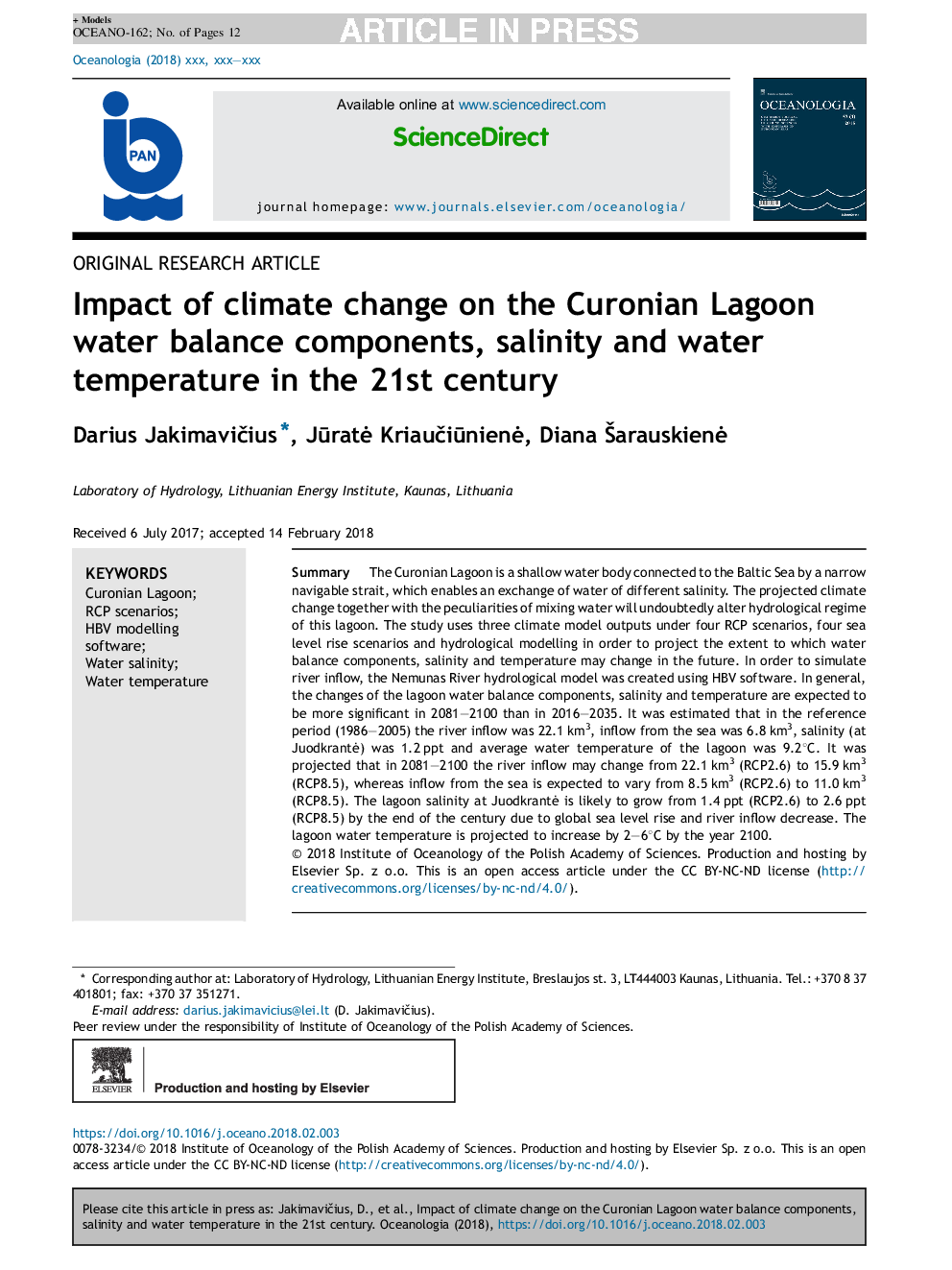| Article ID | Journal | Published Year | Pages | File Type |
|---|---|---|---|---|
| 8399701 | Oceanologia | 2018 | 12 Pages |
Abstract
The Curonian Lagoon is a shallow water body connected to the Baltic Sea by a narrow navigable strait, which enables an exchange of water of different salinity. The projected climate change together with the peculiarities of mixing water will undoubtedly alter hydrological regime of this lagoon. The study uses three climate model outputs under four RCP scenarios, four sea level rise scenarios and hydrological modelling in order to project the extent to which water balance components, salinity and temperature may change in the future. In order to simulate river inflow, the Nemunas River hydrological model was created using HBV software. In general, the changes of the lagoon water balance components, salinity and temperature are expected to be more significant in 2081-2100 than in 2016-2035. It was estimated that in the reference period (1986-2005) the river inflow was 22.1 km3, inflow from the sea was 6.8 km3, salinity (at JuodkrantÄ) was 1.2 ppt and average water temperature of the lagoon was 9.2°C. It was projected that in 2081-2100 the river inflow may change from 22.1 km3 (RCP2.6) to 15.9 km3 (RCP8.5), whereas inflow from the sea is expected to vary from 8.5 km3 (RCP2.6) to 11.0 km3 (RCP8.5). The lagoon salinity at JuodkrantÄ is likely to grow from 1.4 ppt (RCP2.6) to 2.6 ppt (RCP8.5) by the end of the century due to global sea level rise and river inflow decrease. The lagoon water temperature is projected to increase by 2-6°C by the year 2100.
Related Topics
Physical Sciences and Engineering
Earth and Planetary Sciences
Oceanography
Authors
Darius JakimaviÄius, JÅ«ratÄ KriauÄiÅ«nienÄ, Diana Å arauskienÄ,
